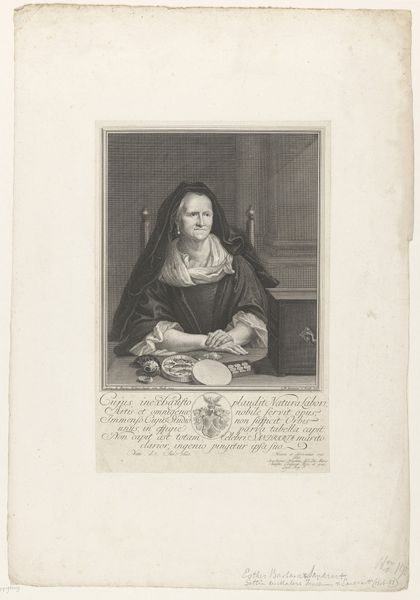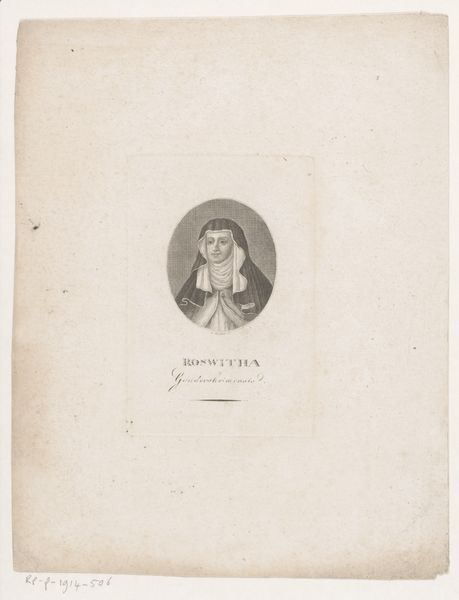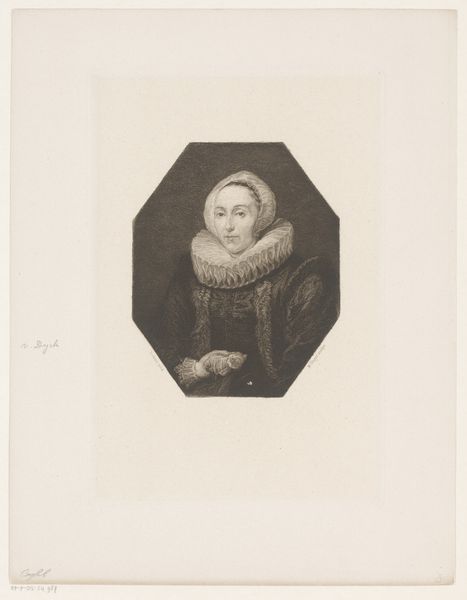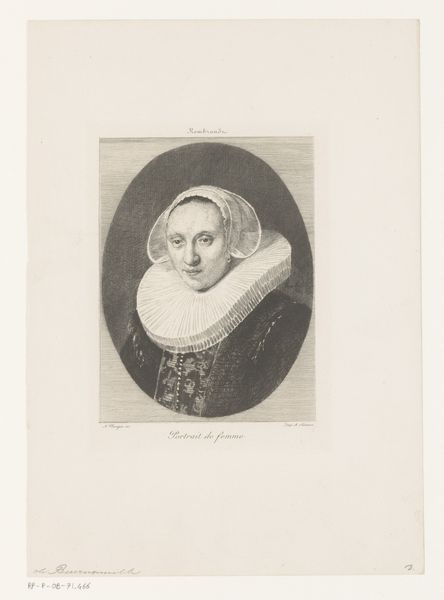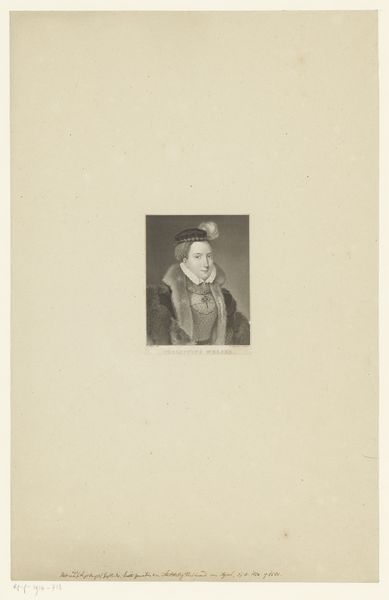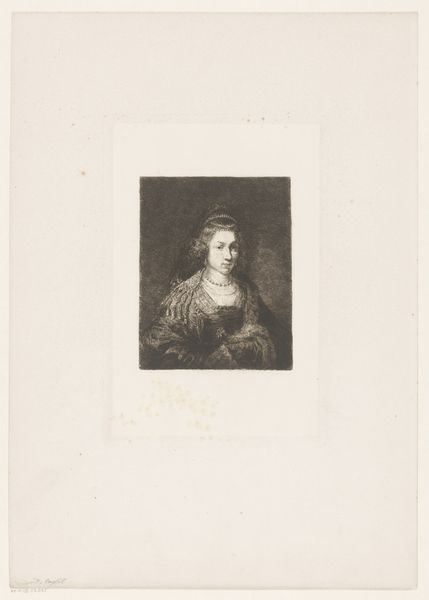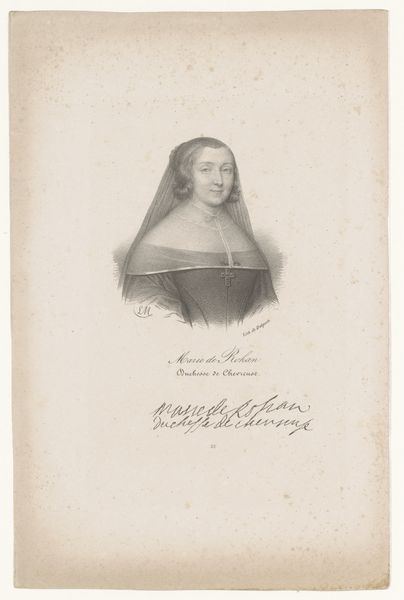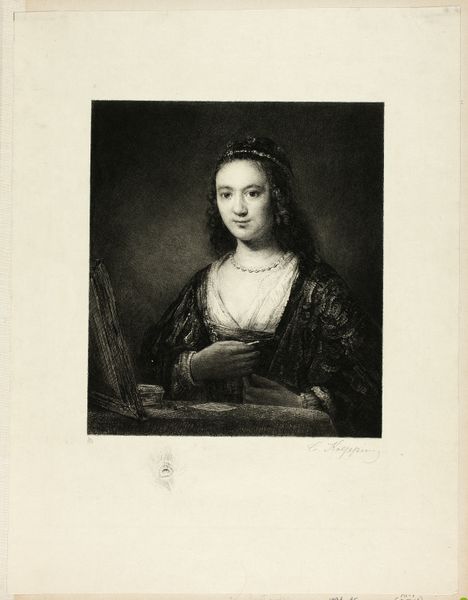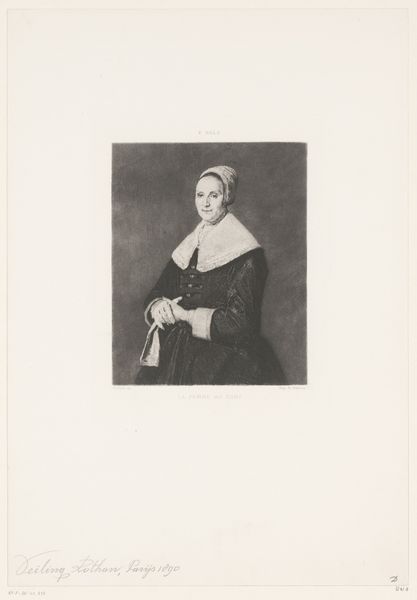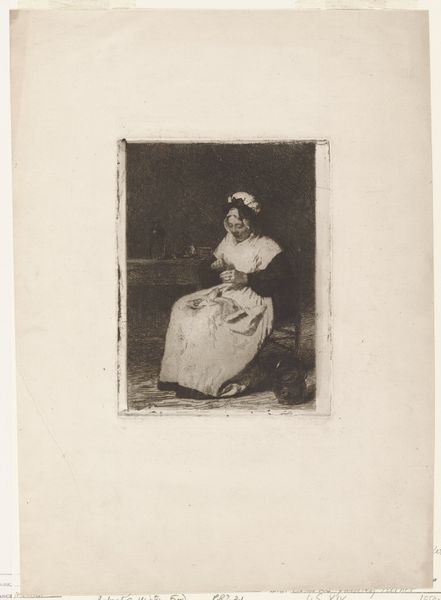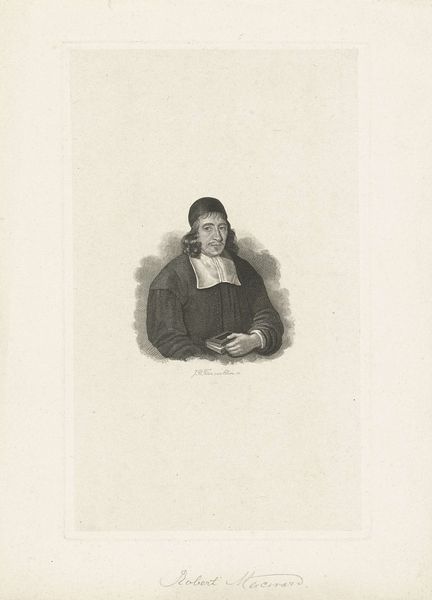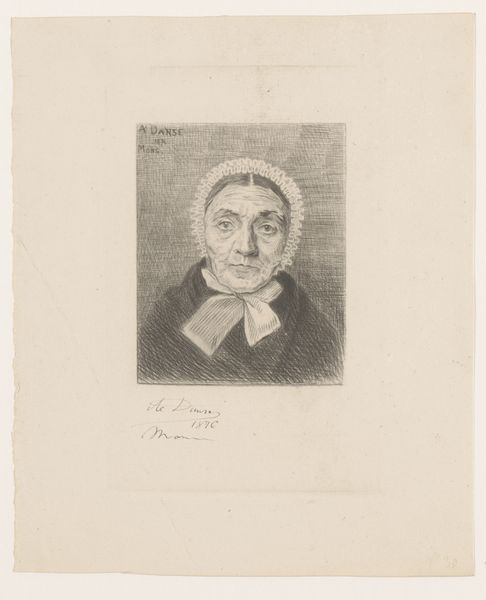
print, etching
#
portrait
# print
#
etching
#
northern-renaissance
#
realism
Dimensions: height 290 mm, width 226 mm
Copyright: Rijks Museum: Open Domain
Curator: The “Portret van een onbekende vrouw,” or Portrait of an Unknown Woman, resides here at the Rijksmuseum. Created between 1847 and 1932 by William Unger, it exemplifies a compelling blend of realism through an etching on print. Editor: My immediate response is a kind of somber quietude. The tight composition and monochrome tones draw me in, but there is something so fundamentally unknowable about the subject's interiority. Curator: Precisely, this unknowability invites crucial discourse. The subject is deliberately rendered, but the absence of identification becomes a space to project narratives. Who might she have been, and what roles did she embody in the social fabric of her time? The Northern Renaissance undertones give this piece a distinctive look. Editor: I'm drawn to the textures Unger achieved with the etching technique. You can almost feel the wool of her garments, see the lace's delicate structure, and contemplate the manual labor embedded within replicating this image to the masses. This print collapses hierarchies between craft and art by highlighting material means. Curator: The material reality echoes a particular historical period defined by class structures and social roles dictating what and how people could perform identity. We could consider, too, whether this print represents how this unidentified woman wished to be perceived, and how much agency she possessed in this depiction. Editor: That material translation by Unger in rendering light and shadow and texture has given the viewer an intimacy despite a temporal and personal gap. This engraving is a historical residue, of production, a portrait's value as both an image and object. Curator: Ultimately, "Portret van een onbekende vrouw" reminds us of the rich complexity inherent in art and its potential to question and disrupt fixed notions of identity and representation, class, labor, and production. Editor: Absolutely. Its stillness contains echoes that connect historical artistic traditions to our engagement today with identity.
Comments
No comments
Be the first to comment and join the conversation on the ultimate creative platform.
